Coatzacoalcos, Veracruz 作者: 来源: 发布时间:2021-11-16
1.Population and Area
Pop: 319,187 (munip)
Area: 471 km2 (munip.)
Elev: 25 masl
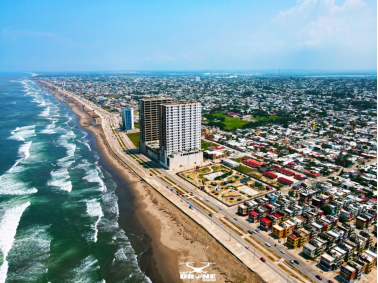
Coatzacoalcos location in Mexico within the state of Veracruz
https://goo.gl/maps/53VtpR2ybKhjc8NQ7
2. Natural geography
Nature and weather
Orography
The Municipality is located in the isthmic zone and in the southeastern part of the State. As it is a coastal municipality in the leeward plains, its soil has large plains.
Hydrography
It is watered by the Coatzacoalcos river that forms the Coatzacoalcos bar; the Tonalá river; bordering with Tabasco and Huasuntlán, to the north of the municipality; In addition, it has the streams of Tortuguero, Gavilán, and the Ostión lagoon.
Main ecosystems
The ecosystems that coexist in the municipality are the high evergreen forest with palm groves, mangroves and grasslands, where a fauna composed of populations of wild mammals such as armadillo, squirrel, rabbit, badger developed; reptiles and birds such as herons, thrushes, pigeons, cranes, and swallows.
Natural resources
Its richness is represented by minerals such as sulfur, silica sand and salts. It also has oil and natural gas fields.
https://veracruz.mx/destino?Municipio=39
Köppen Classification: Tropical Monsoon Climate
ropical monsoon climate, occasionally also known as a tropical wet climate or tropical monsoon and trade-wind littoral climate in climate classification, is a relatively rare type of climate. Tropical monsoon climates have monthly mean temperatures above 18°C (64°F) in every month of the year and feature wet and dry seasons, as Tropical savanna climates do. Unlike tropical savanna climates however, a tropical monsoon climate's driest month sees less than 60 mm (2.36 in) of precipitation. Also a tropical monsoon climate tends to see less variance in temperatures during the course of the year than a tropical savanna climate. This climate has a driest month which nearly always occurs at or soon after the "winter" solstice for that side of the equator.
The Köppen Climate Classification subtype for this climate is "Am". (Tropical Monsoon Climate).
The average temperature for the year in Coatzacoalcos is 78.0°F (25.6°C). The warmest month, on average, is May with an average temperature of 83.0°F (28.3°C). The coolest month on average is January, with an average temperature of 72.0°F (22.2°C).
The highest recorded temperature in Coatzacoalcos is 104.0°F (40°C), which was recorded in February. The lowest recorded temperature in Coatzacoalcos is 46.0°F (7.8°C), which was recorded in December.
The average amount of precipitation for the year in Coatzacoalcos is 102.9" (2613.7 mm). The month with the most precipitation on average is September with 19.1" (485.1 mm) of precipitation. The month with the least precipitation on average is March with an average of 2.1" (53.3 mm).
https://www.weatherbase.com/weather/weather-summary.php3?s=14767&cityname=Coatzacoalcos%2C+Veracruz%2C+Mexico&units=
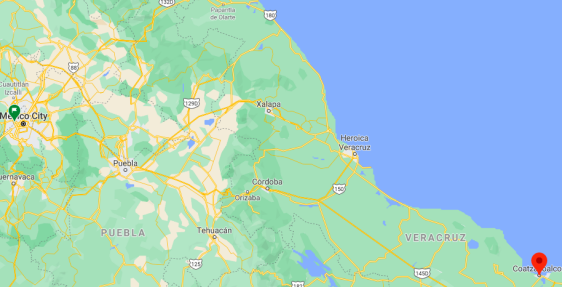
Getting there and around
Get there
By air – The quickest way to get from Mexico City to Coatzacoalcos is to fly to the Minatitlan International Airport, which costs $1900 - $3200. The quickest flight from Mexico City Airport to Minatitlan Airport is the direct flight which takes 1h 10m.
Minatitlán International Airport (IATA: MTT, ICAO: MMMT) is an international airport located in Cosoleacaque, Veracruz, Mexico, near Minatitlán. It handles national and international air traffic for the cities of Minatitlán and the south-eastern region of Veracruz state.
https://en.wikipedia.org/wiki/Minatitl%C3%A1n/Coatzacoalcos_International_Airport
By car – The distance between Mexico City and Coatzacoalcos is 513 km. The road distance is 591.6 km. It takes approximately 7h 15m to get from Mexico City to Coatzacoalcos.
By bus – The cheapest way to get from Mexico City to Coatzacoalcos is to bus which costs $550 - $1200. There are services departing from México TAPO and arriving at Coatzacoalcos via Minatitlán. The journey, including transfers, takes approximately 9h 11m.
https://wikitravel.org/en/C%C3%B3rdoba_(Mexico)
https://www.rome2rio.com/s/Mexico-City/Coatzacoalcos
Car Rental – To explore Mexico’s provincial towns and cities—including its beach locations and the scenery and attractions near them— consider renting a car for your visit. Having your own car will give you more flexibility than using public transport options and, in some cases, offer you access to places which are otherwise difficult to visit without the use of a car.
COVID19 – International entry into Mexico from United States
Allowed for: All visitors arriving by air. Mexico land borders are closed to non-essential travel
Restricted for: There are no current restrictions.
Get around
Local Buses – Local buses and mini-buses (combis or micros) are available locally for a fraction of the cost of a taxi around town. You need to speak Spanish to be able to ask for directions or ask the driver to tell you where to get off.
Taxis – Taxis in most of Mexico’s towns and cities are not metered, so agree your price before you get in. Taxi travel is very affordable in Mexico, in comparison to the USA, Canada and Europe, and so provides a viable means of public transportation in Mexico. Your hotel can arrange taxis for you; some post their rates on a board in the lobby; taxi hotel rates are usually higher than cabs you hail off the street. If you speak Spanish, you will have a distinct advantage and be able to negotiate a price with the driver.
Uber is expanding rapidly across Mexico and now offers services in cities across the country, including: Mexico City, Toluca, Cuernavaca, Puebla, Querétaro, León, Aguascalientes, San Luis Potosí, Guadalajara, Monterrey, Hermosillo, Tijuana, Mexicali, and Mérida. Uber has been adding Mexican cities to its network every year, check for availability when you arrive at your destination in Mexico.
Cabify and Didi are also developing and currently operate in cities including Mexico City, Toluca, Monterrey, Puebla, Querétaro and Tijuana. Check for availability in the city you are visiting.
These services offer people with smartphones a way to book a cab through a mobile app for a pre-agreed price. Fares are comparable with Sitio type cabs, and sometimes trade at a premium to this when local demand increases.
https://www.mexperience.com/transport/taxi-travel-in-mexico/#51
3. ECONOMY
GDP: 42,819 M MXN (2010)
https://imco.org.mx/ciudades2010/ciudades/51_Coatzacoalcos.html
4. Industry characteristics
On the coast of the Gulf of Mexico, to the south, the city and port of Coatzacoalcos is located, at the mouth of the river of the same name. Today Coatzacoalcos is distinguished by being a regional center of industrial, commercial and service significance.
Its economic vocation has been favored by being located in the region near the Pajaritos, Cangrejera and Morelos petrochemical complexes that together with the Cosoleacaque Complex, which together produced in the last year, 13,000,100 T of chemical products.
The Port of Coatzacoalcos has the necessary infrastructure to handle bulk, solid and liquid cargo, containers and drums. By road you can reach the port of Salina Cruz, Oaxaca, in the Pacific Ocean through the Isthmus of Tehuantepec, thus accessing Asian markets.
On May 17, 2008, the then state governor, Fidel Herrera Beltran, inaugurated the First Foton Automotive Cargo Agency of Chinese origin and in the same way, the tractors of this same agency are assembled within the port area.
ZEE (Special Economic Zone)
The approval of the special economic zone contemplates the isthmus project, where the federal government identifies Coatzacoalcos in the Coatzacoalcos-Salina Cruz Oaxaca Isthmus corridor, considered in the special economic zone, which means the preparation of land that the government itself federal acquired for the installation of companies.
This favors the municipality, since by recognizing Coatzacoalcos as a special economic zone, investors are attracted with tax incentives that encourage investment and job creation both in construction, as well as permanent jobs at the end of its installation, favoring not only Coatzacoalcos but to all the municipalities along the project to the port of Salina Cruz.
Key project: 2020 projects for Coatzacoalcos
The Municipal President of Coatzacoalcos, during his 2nd Government Report at the City Theater, announced the projects that his administration has for next year in matters of sanitation, security, infrastructure, as well as the purchase of four new units for the garbage collection and achieve 95 percent efficiency in this service.
There is interest in reviewing three alternatives for the proper management of urban solid waste, applying various investment mechanisms, hoping that in the second half of 2020, the remediation process of the Villa Allende landfill will begin.
Sanitation
The project of a plant in the Peloteros neighborhood will be reactivated, to properly process wastewater and reduce discharges into rivers and beaches, this will require the conditioning of gullies and sanitary drainage.
A waste plant will be recovered in Villa Allende, so that in this way, discharges to the sea comply with environmental regulations.
The City Council's agreement was signed with the Ministry of Energy, the Federal Electricity Commission and the Trust for energy saving, to be able to buy seven thousand LED lamps for public night lighting, which will reinforce the mission of renewing the 30 thousand existing lamps, which are energy-saving and environmentally friendly.
Security
The guardhouses of nine points in the city were rehabilitated and will be followed up until the 34 existing ones are completed.
As of January 2020, the call was launched to continue with the recruitment of new elements that reinforce the local police corporation. With the support of the security strengthening fund, and using resources from the municipality, the municipal police will be equipped with weapons, vehicles and ballistic vests.
Urban infrastructure improvement
The rehabilitation of the infrastructure of the Paseo "Puerto México", two points of high local and tourist traffic, as well as the Paseo Ribereño, for the tranquility and enjoyment of the inhabitants and tourists, will be completed.
The construction of hydraulic paving will continue in various parts of the municipality, seeking to close circulation circuits in the neighborhoods so that citizens have free access to public services; in the same way, the sanitary drainage and lighting will continue to be attended to.
For these projects, federal resources were obtained from the Priority Attention Program for the Marginalized Local Population of Coatzacoalcos, promoted by the Secretariat of Agrarian, Territorial and Urban Development (SEDATU), achieving access to an amount of 530 million pesos.
https://www.coatzacoalcos.gob.mx/prensa/anuncia-presidente-municipal-proyectos-para-el-2020
5. Attractions
Paseo de las Escolleras (Walk of the Escolleras)
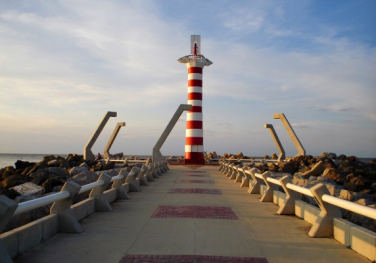
One of the most impressive places in Coatzacoalcos—or Coatza as locals affectionately call it—is Paseo de las Escolleras, an almost one kilometer long walkway that is right where Coatzacoalcos river joins the Gulf of Mexico.
Let yourself be surprised by sea beauty while the breeze splashes your skin as you walk watching fishermen among the rocks or saying goodbye to the boats that leave this port that remains engraved in the heart once you know it.
Your walk out to sea on this pier will take you to the red and white stripe ring that indicates to sailors they are arriving in Veracruz. Take a refreshing coconut water or of any other flavor among the wide options that you will find at the beginning of this engineering work.
The Coatzacoalcos River has a 32 kilometers extension, two-thirds of which can be navigated. It’s considered the fourth largest current in Mexico and because of the large number of boats and goods moving over its waters, it is Gulf of Mexico third most important.
Malecón de Coatzacoalcos (Coatzacoalcos Pier)
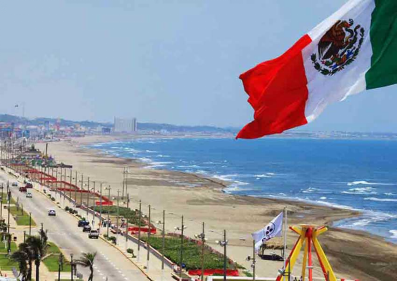
Walking along the 12-kilometer boardwalk will fill you with life and city essence. It’s one of the most important city avenues, so it’s worth exploring Veracruz flavors in one of its restaurants or spending the night dancing in its bars and discos.
The characterizing jarochos joy is evident during festivals such as carnival—generally takes place between February and March—in which decorated troupes parade along the boardwalk to the trendy music and traditional sounds rhythm. The colorful and good atmosphere of the carnival will make you want to return every year.
Close to the pier is the Hemiciclo a los Niños Héroes, where you can see some World War II anti-aircraft guns. In your itinerary, include a visit to the Cathedral of San José, a temple built at the 20th century beginning. Its architectural simplicity is outstanding.
Museums
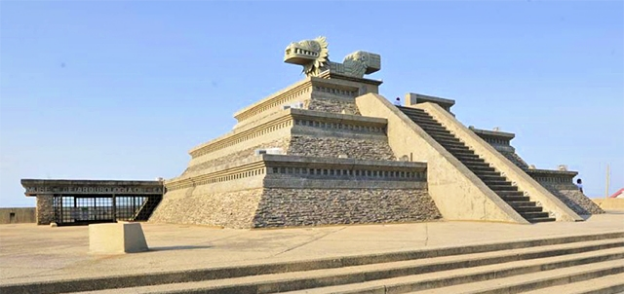
Leave space to take a tour of the Museo del Faro (Lighthouse Museum) settled on the old Guardafaro house. Through photographs, instruments and models you will be able to learn how the port has developed. You’ll feel like a time traveler as you go over this important part in Coatzacoalcos history.
If it is about museums, also visit the Museo de Arqueología Olmeca (Museum of Olmec Archeology). It has an over a thousand pieces collection on display, since this culture also had influence in the region. The museum's design mimics a pyramid and among its very detailed pieces are sculptures of clay, granite and jade.
Enjoy an afternoon of good weather with the family in the Parque Bicentenario (Bicentennial Park), where you can visit a zoo with endemic species, mainly birds. To get there, you can choose the most interesting path by taking a boat to Villa Allende.
https://www.visitmexico.com/en/veracruz/coatzacoalcos
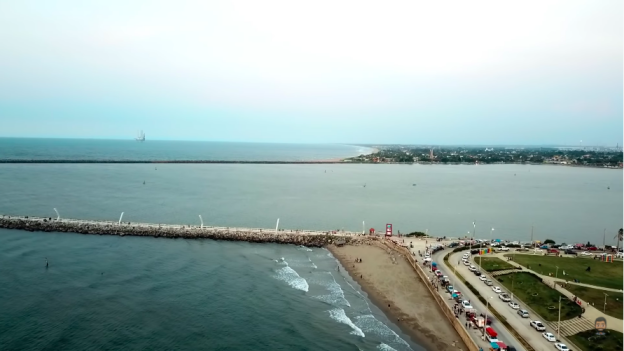
Esto existe en MEXICO (Coatzacoalcos y Soteapan) || Veracruz
https://youtu.be/ZRcCvnbYqcM
6. History
Within the Olmec geographical and cultural area, Coatzacoalcos was considered the capital of the province. At the end of the Axayácatl government, the local population rejected the hosts of the Mexica empire in Cuilonimiquiztlan (Cuilonia, municipality of Soteapan). During the Spanish conquest (early 1520), Diego de Ordaz explored and probed the Coatzacoalcos River in search of gold. On the instructions of Cortés, Gonzalo de Sandoval and several captains conquered the city of Coatzacoalcos and founded the town of Espíritu Santo in June 1522, upriver and on the right bank, near Barragantitlan or Paso Nuevo, currently the jurisdiction of the municipality of Ixhuatlán del Southeast.
This test served as a garrison to dominate and pacify the entire province, which became the center of an extensive area that included the southeast of the state of Veracruz, Tabasco and part of Chiapas, Campeche and Oaxaca. The congregation of indigenous people took place in 1599. In the religious order, it was attached to the bishopric of Oaxaca. During the sixteenth and seventeenth centuries it was the head of the mayor's office later transferred to Acayucan because forced labor and diseases brought down the population, to the extent that at the beginning of the 18th the Villa del Espíritu Santo almost disappeared.
Coatzacoalcos Foundation
There are no very clear data on the foundation of Coatzacoalcos, and its settlement is located in the metropolitan territory of the Olmecs. The stories of the ancient peoples of Mexico say that Quetzalcóatl was a character who fled Tollan-Xicocotitlan in the 12th century, boarding a boat made of snake skins and that, after announcing his return to rule the destinies of his people, he lost at sea. This is precisely what the word Coatzacoalco means: coatl = ‘snake’, tzacualli = ‘encierro’, and co = ‘place’ or ‘site’.
Hernán Cortés, informed by Gonzalo de Escobar, carried out an expedition, which sought to find a large town full of gold on the island of the "Guazacualco" river, which they would later baptize with the name of San Juan de Ulúa.
In 1520, after the taking of Tenochtitlán, Hernán Cortés ordered to populate this region. In his official correspondence with Emperor Carlos V, he pointed out this place as the best natural port that exists on the coast of the Gulf of Mexico, where commercial and maritime activities could be carried out. It was for this reason that Cortés sent Captain Gonzalo de Sandoval to found, on Sunday June 8, 1522, on the banks of the Guazacualco River (the name used by the Spaniards to pronounce the Nahuatl Coatzacoalco) the town they called "Villa del Espíritu Santo" ( since that same day the feast of Pentecost or the Easter of the Holy Spirit was celebrated), on the right bank of the Coatzacoalcos river, where today Villa Allende is located.
During the colonial era, the Coatzacoalcos bishopric was established, a royal shipyard, in what is now Minatitlán and a fort for its defense. At this same time, La Villa del Espíritu Santo is named a province, with its capital in Acayucan, and its area of influence includes the territories of San Pedro Xoteapan, Mecayapan, Soconusco, Oluta, Texistepec, Sayula, Benatitlán, Chinameca, Mazapa, Oteapan , Jáltipan de Morelos, Cosoleacaque, Moloacán, Ixhuatlán del Sureste, Nanchital, Huimanguillo, Barra de Coatzacoalcos and the Villa del Espíritu Santo.
At the end of 1771, the exploration of the isthmus began and the creation of a channel that would unite the two oceans was planned.
Very high quality salt was extracted, an industry that is still important today, and also precious woods with which some important ships were manufactured in past centuries.
The remoteness of the center, the diseases that came from Europe and the harassment of the corsairs (French, Portuguese and Dutch) caused the few inhabitants of the region to emigrate to safer places such as Ixhuatlán del Sureste, Chinameca, Acayucan, Veracruz and Tabasco.
In early 1793, the towns of the region, including Coatzacoalcos, watched with terror and amazement the eruption of the San Martín volcano, in the nearby Sierra de los Tuxtlas. At present this volcano is inactive.
Establishment of the municipality
By decree no. 118 of December 22, 1881, the municipality of Coatzacoalcos was created, with the town of this name as head, and the congregation of Tonalá, segregated from the municipality of Minatitlán. Its first city council, headed by Ambrosio Solorza, a sea pilot, took office the last week of January 1882.
By decree no. 10 of July 3, 1900, the town of Coatzacoalcos was elevated to the category of town with the name of Puerto México. In 1906 the Liberal Club "Valentín Gómez Farías", of Magonista affiliation, functioned. By decree no. 14 of July 1, 1911, Puerto México obtained the title of city; and by decree no. 34 of December 8, 1936, its original name of Coatzacoalcos was restored. At present it is one of the most important populations of the state; Its development is due in large part to the oil industry and the merchant activity of its high seas and coastal port. It is also considered the Puerta del Sureste. It registers a stable tourist influx. The following complexes are located in Coatzacoalcos: «Cangrejera», «Pajaritos» and «Morelos», the largest petrochemical complexes in the country and among the largest in Latin America. This industry has led to a significant boom in the town and population growth. The city has all the urban services.
According to the Coatzacoalcos Citizen Observatory, in 2018 there were 49 kidnappings and 160 intentional homicides in the municipality. Veracruz has been one of the states with the highest rates of violence in Mexico in the last decade. Thus the decapitated body of the businesswoman Susana Carrera.
Construction of the port and railways
In 1907, during the presidential term of Porfirio Díaz, the seven docks of the port of Coatzacoalcos were inaugurated, together with the National Railroad of Tehuantepec.
The port works were in charge of the American company S. Pearson and Son Limited, which built the docks with 14 electric cranes and warehouses with pits for access to the railroad cars.
With the establishment of the railroad, the inter-oceanic traffic boom began, with numerous cargo movements between Puerto México and Salina Cruz. Companies such as Hawaii Company and its products (packaged pineapple) were some of those that generated rail traffic in order to move their merchandise to Europe and the Atlantic coasts of the United States.
7. Other Information: Transportation hub
Coatzacoalcos has been a transportation hub for hundreds of years. It is connected via air, water, road, and rail to the surrounding region and the rest of the world.
The Minatitlán/Coatzacoalcos National Airport is 15 kilometres (9.3 mi) away in Cosoleacaque and has been an international airport since August 2006.
The Port of Coatzacoalcos (Puerto Mexico) is an international port of entry that provides transhipment of oil and petrochemicals. After an upgrade to the railway along the Tehuantepec Route was opened in 1907 by Porfirio Díaz the port saw an increase of shipping via the Isthmus of Tehuantepec, particularly from the American-Hawaiian Steamship Company. The port saw a decrease in traffic after the opening of the Panama Canal from 1914 on, but traffic has started to build up since the oil boom of the 1970s. The railway is now known as the Ferrocarril Transístmico ("Trans-Isthmic Railroad").
The CG Railway operates train ferries between the Port of Coatzacoalcos and the Port of Mobile in Alabama, US. Ferrosur also provides rail service in and out of Coatzacoalcos as far southeast as Las Choapas, to the north and west to Veracruz and Mexico City, as well as to the south over the Tehuantepec route now owned by Ferrocarril Transistmico from Medias Aguas to Salina Cruz in the state of Oaxaca.
Mexican Federal Highway 180 follows the southern shore of the Bay of Campeche through Coatzacoalcos to the Yucatán Peninsula. Highway 180 and a rail line to Allende have been carried over the Coatzacoalcos River via the 1910 built Coatza I bridge for more than a century. A second cable stayed bridge known as Coatza II or Antonio Dovalí Jaime was built to the south to carry more road traffic over the river. It was constructed starting in 1979 and was opened by President Miguel de la Madrid Hurtado on 17 October 1984. Coatza II has a center span of 288 metres (945 ft) and an overall length of 698.25 metres (2,290.8 ft). A ferry operates between the city of Coatzacoalcos and Allende, which in 2017 was supplemented by a 1.1-kilometre (0.68 mi) underwater tunnel that carries four lanes of traffic.
8.Contact Information

City Mayor: Víctor Manuel Carranza Rosaldo
Contact number: +52 (921) 211 2109, ext. 2200
Govt. Office Address: Av. Ignacio Zaragoza 404, Col. Centro, C.P. 96400, Coatzacoalcos, Ver
Twitter: https://twitter.com/VCarranzaR
Website: https://www.coatzacoalcos.gob.mx
E-mail: vcarranza@coatzacoalcos.gob.mxMain sources
